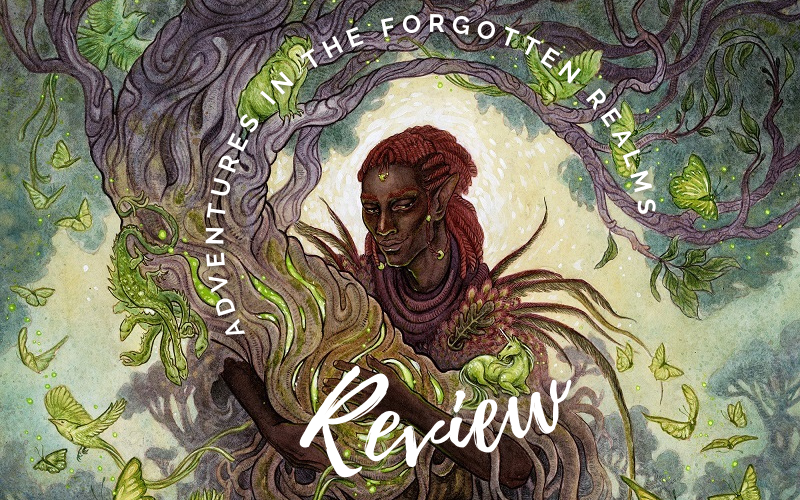Adventures in the Forgotten Realms is Wizards of the Coast‘s latest expansion for Magic: The Gathering. This time, they’ve decided to dip into another of their successful properties: Dungeons and Dragons.
So, what does the land of Faerûn bring to the table for Elf fans? Well, the setting has Elves as one of the main playable races for starters. That means we have plenty of Elves to talk about. Unfortunately, that means we have some draft chaff to get through as well. In actual fact, Elves are so prolific in the setting that we have mono-coloured cards to cover in all five colours of Magic. This includes the first ever Mono-Blue and Mono-Red Elves.
As always, I’ll be giving all the cards I look at a rating out of five at the end of each entry. Let’s go.
Half-Elf Monk
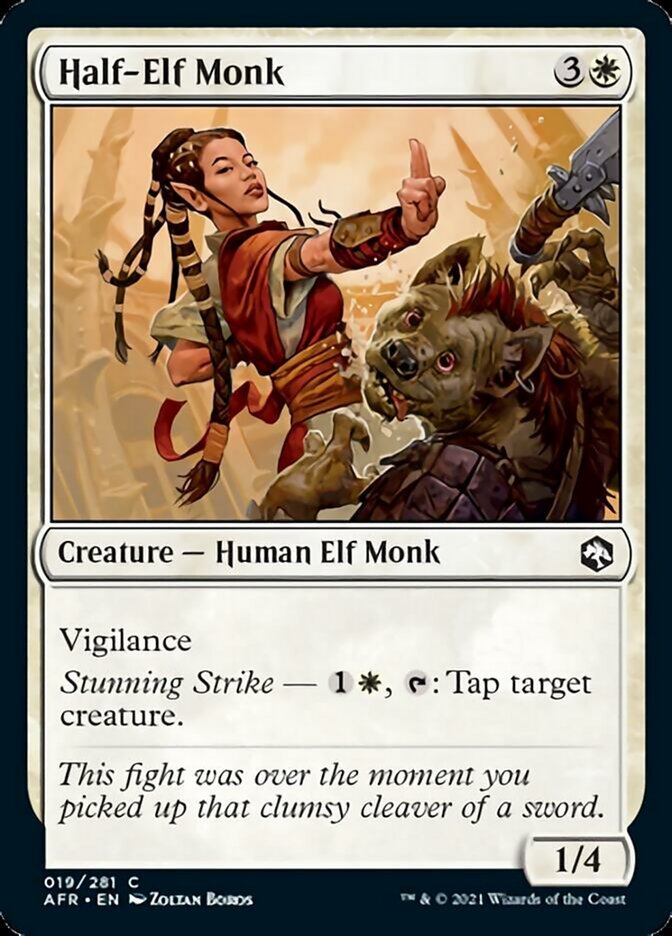
Our first card is our first ever Half-Elf. Mechanically, this means we get creatures that are both Humans and Elves. This doesn’t mean we can suddenly play a hybrid Human-Elf tribal deck, but is an interesting first for Magic.
Other than that, this is a limited-only card. It seems like a decent tapper, if a bit expensive to activate. From a few drafts of Adventures in the Forgotten Realms, I’ve found this card is very good at shutting down the Red-White equipment archetype. Beyond that, it’s mostly a filler card that doesn’t really help with anything we need.

Monk of the Open Hand

Our second card has applications beyond limited. However, those applications aren’t for Elf decks. While we can almost always trigger the monk’s ability due to our low curves and mana generations, it isn’t really the payoff we’re after. We just as often play 3+ spells in a turn and this only benefits from the second one.
Anyway, I look forward to dying to this traitorous Elf in standard as I try to set up in the early turns.

Moon-Blessed Cleric
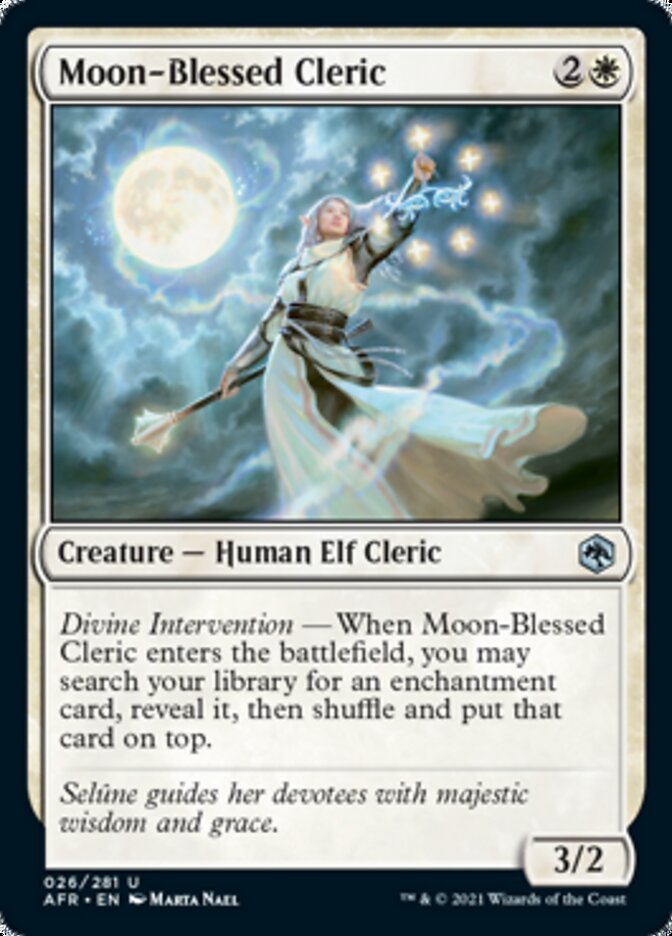
Moon-Blessed Cleric fetches up enchantments – a card type we don’t really utilise in Elves decks. However, there are some cool enchantments this can fetch up in slower, weirder formats. Five-colour Elves in EDH, maybe? Beyond that, this card’s applications are somewhat limited.

Aberrant Mind Sorcerer
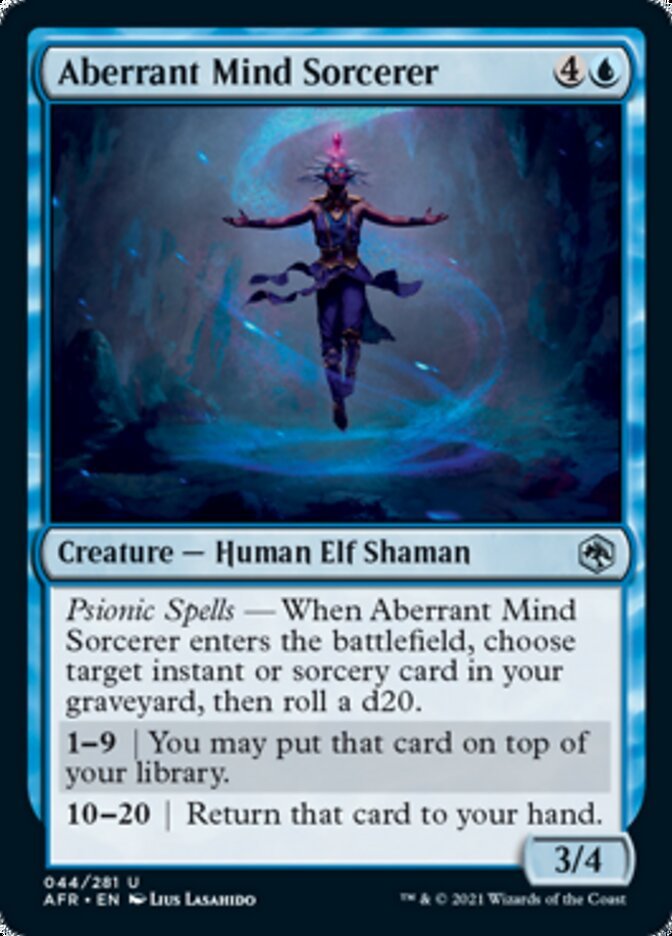
Our first ever Mono-Blue Elf. Cool.

Arcane Investigator
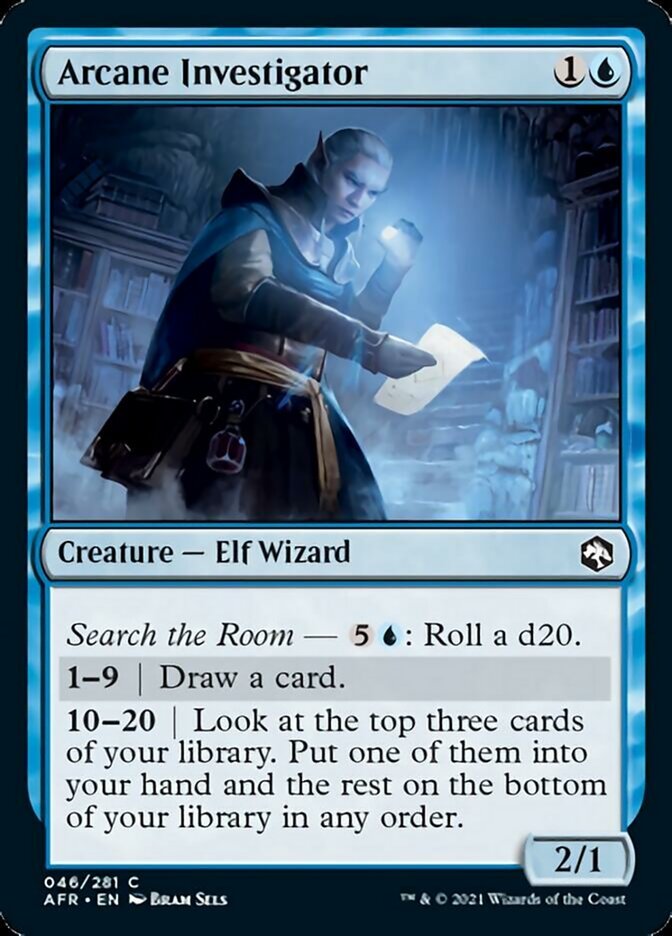
Another limited card, so there’s not much to say here. It is a mana sink in the late game, but we already have that in Standard with Elvish Warmaster.

Soulknife Spy
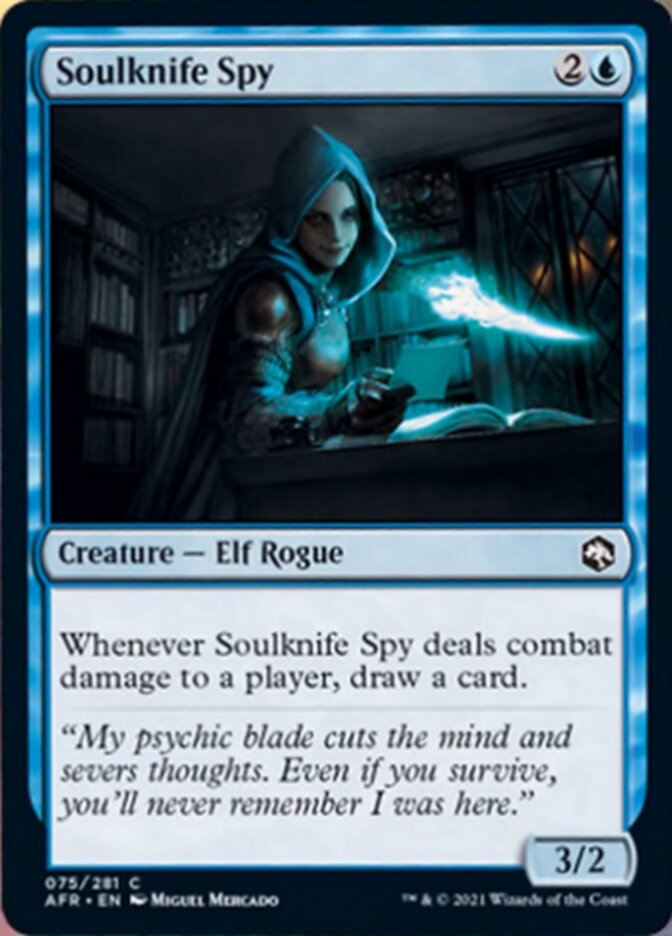
Another victim of Elves getting out of their normal Magic niche, Soulknife Spy is a cool upgrade on older Ophidian, but isn’t making it out of limited. I’ve heard Blue is awful in Adventures in the Forgotten Realms draft, too, so that’s not a good sign for it.

Drider
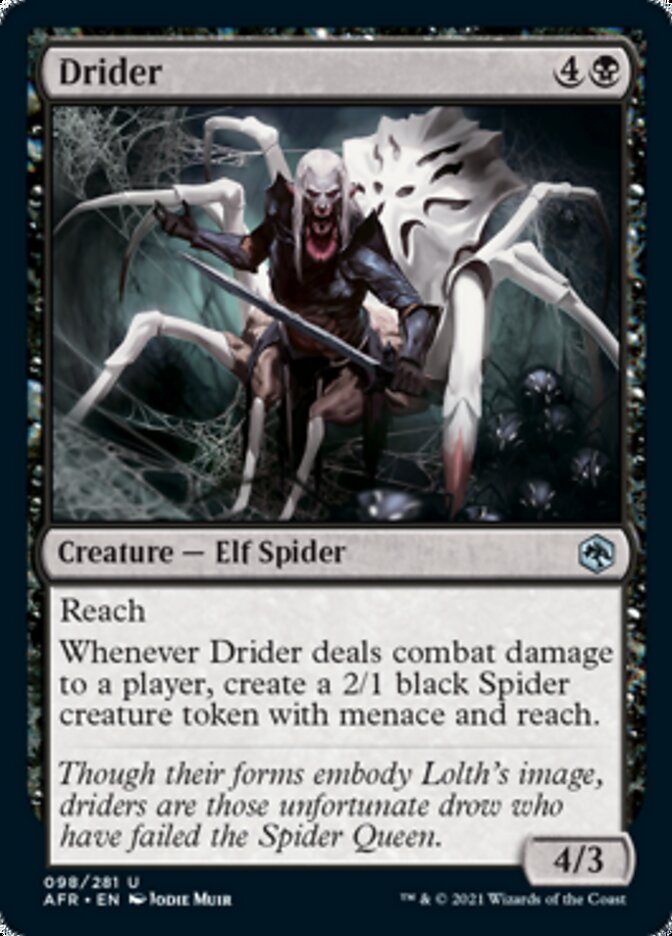
Drider is proof that Wizards were willing to do this awful Spider-Elf combination in the set. That leaves me with one question – why doesn’t Lolth, Spider Queen make Elf Spider tokens?

Hired Hexblade
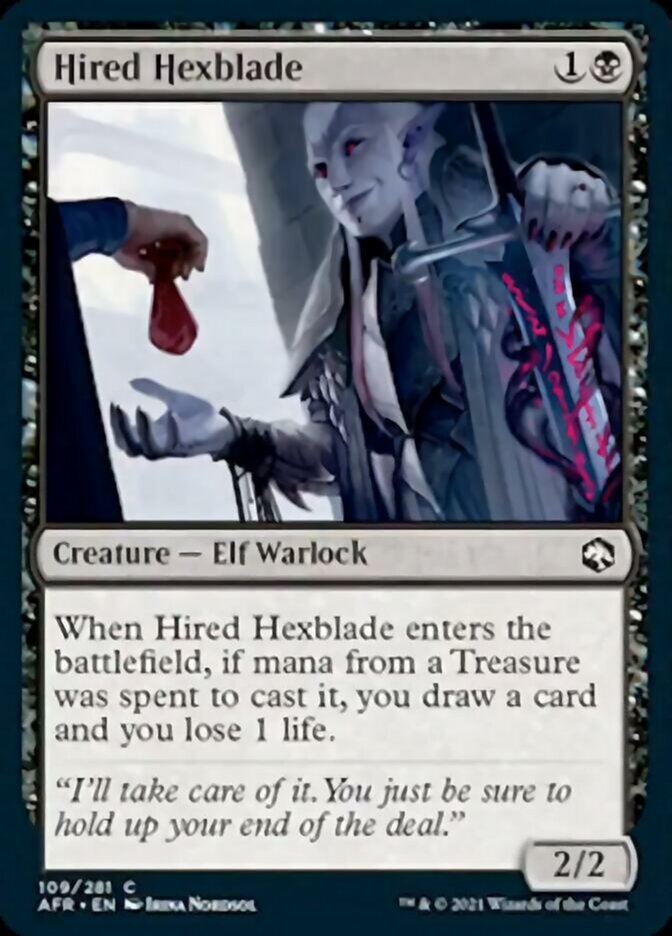
Look Elvish Visionary, this is what they need to mimic a fraction of your power. A treasure and a life? I think I’ll pass.

Delina, Wild Mage
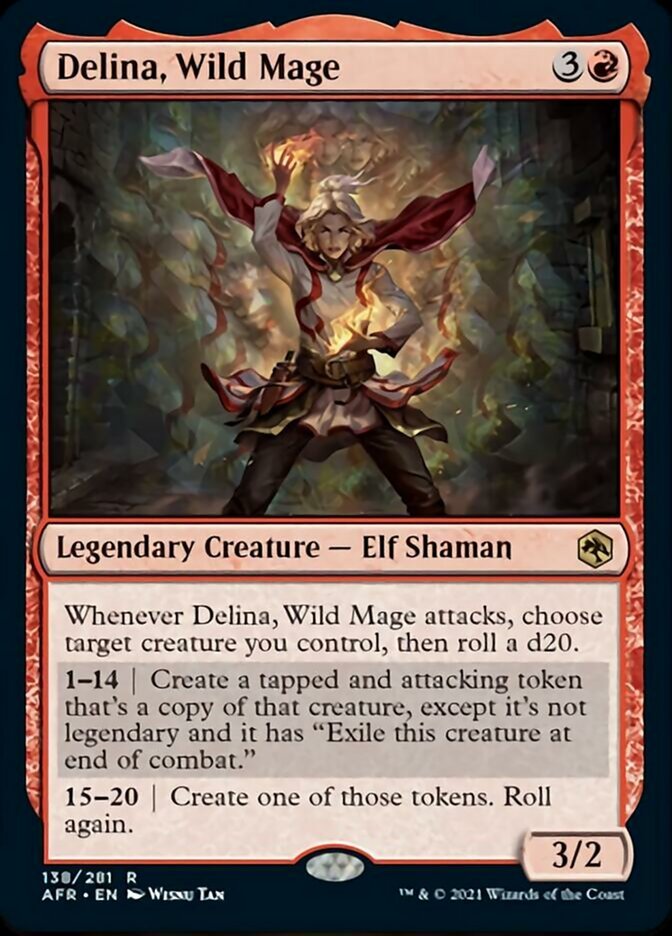
Delina, Wild Mage is a cool card. People immediately built not-quite-inifinite combo decks utilising her in Standard and Adventures in the Forgotten Realms draft. To be honest, if Shaman of the Pack were legal in Historic, I’d would probably build a meme-y version of Elves where you attack with Delina to try and make one or two copies of Shaman to kill our opponent. It wouldn’t be a good deck, but it would probably be fun. As it stands, the best thing to copy in Standard is Skemfar Shadowsage, and a deck doing that sounds like it’s getting clogged at the four-drop slot. Delina is just too slow and inconsistent for older formats.

Circle of Dreams Druid
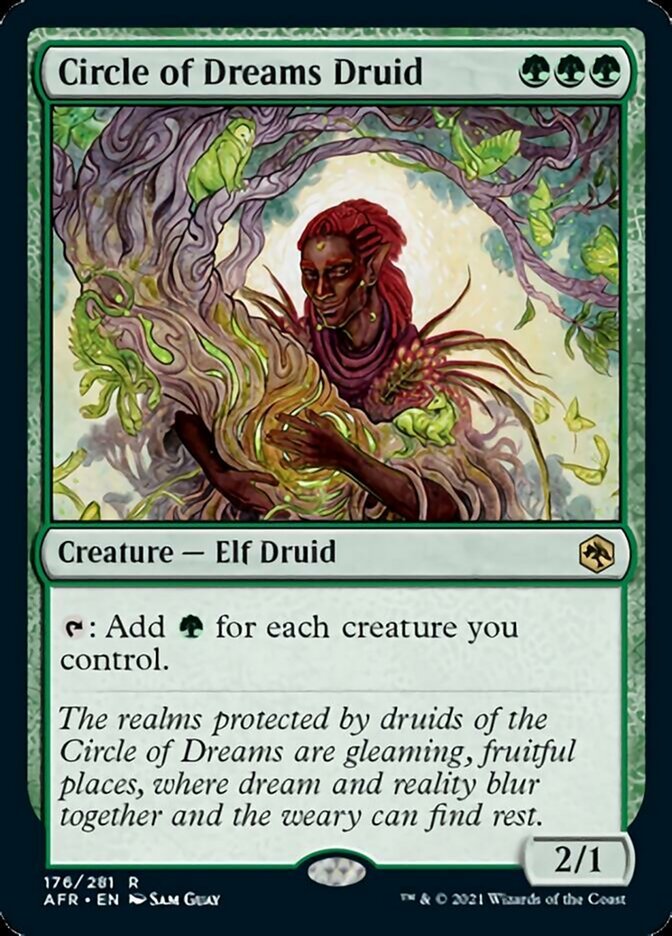
Circle of Dreams Druid is the card I’m most excited about in the set. While a three-mana 2/1 is incredibly fragile and it can’t really compare to Elvish Archdruid in formats that have access to it, there are formats that don’t get to play Archdruid.
Pioneer is a format that was sorely lacking in three-drop ‘lots of mana’ creatures with the only real option before this being Marwyn. Marwyn has two issues: she’s legendary; and you need to play her before your other Elves to have her make much mana. Circle of Dreams Druid helps cover these issues while not fully replacing Marwyn, but working alongside her.
We’ve already had success with the Druid on stream immediately after the release of Adventures in the Forgotten Realms. It was nice to see a brand new card help Elves in a format we were struggling with before. I’m also playing Circle of Dream Druid alongside Archdruid in some of my Historic builds. The massive boost in mana that the two cards provide together makes cards like Craterhoof Behemoth trivial to cast.

Circle of the Moon Druid
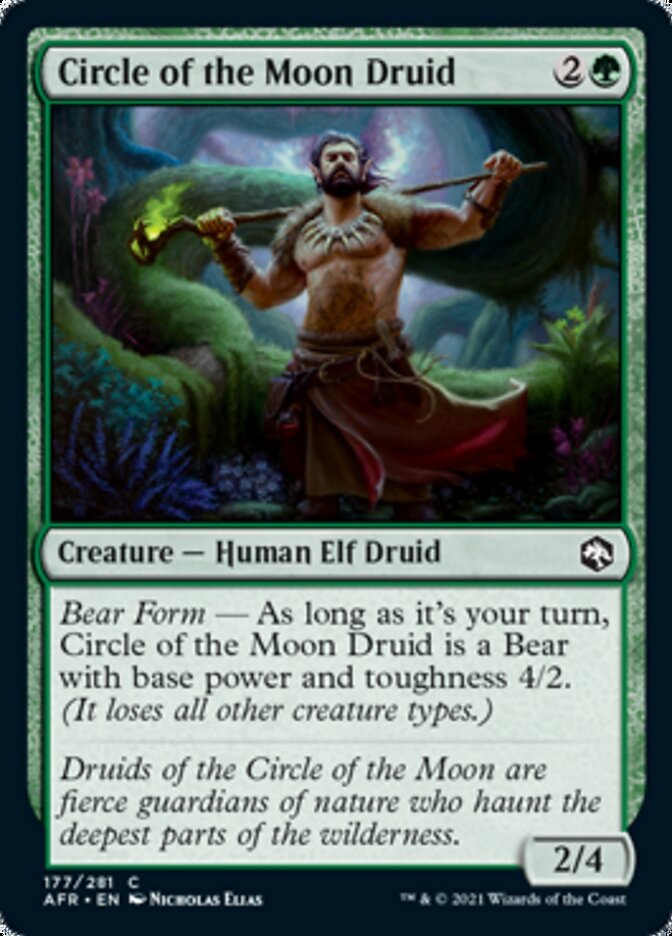
Our second ‘Circle of [blank] Druid’ is a lot more disappointing. He may be buff, but he’s not punching his way out of limited. This Elf isn’t even an Elf on our turn.

Ellywick Tumblestrum
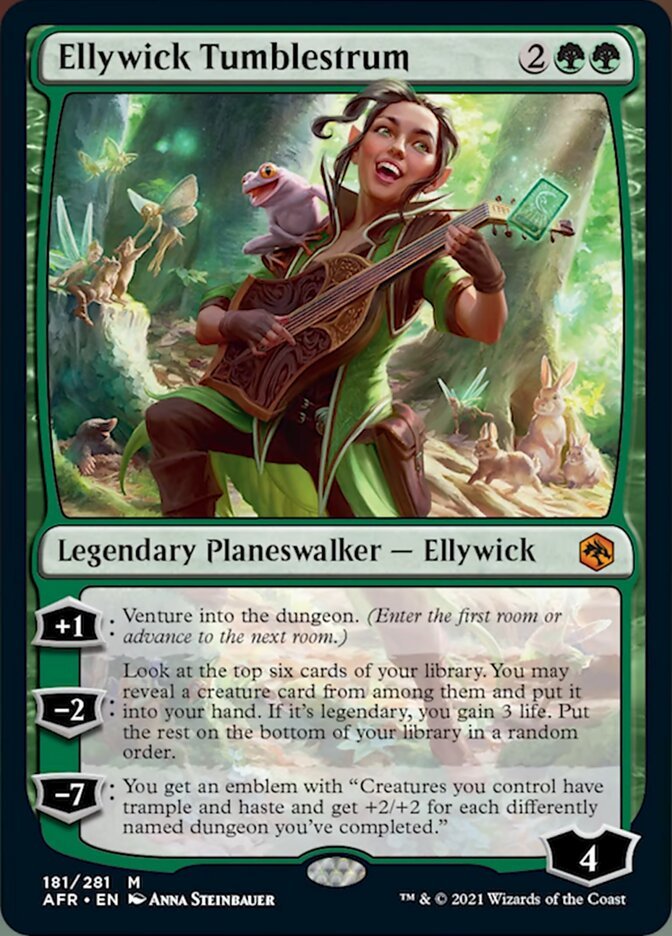
Ellywick is our on-colour Planeswalker for the set. While she doesn’t interact with Elves at face value, there’s an Elf later in the review that allows us to Venture repeatedly as well. I’ve had fun with a Dungeon-centric version of Elves in Future Standard, but I don’t think it’ll get much further than that.
You could look at Ellywick as a repeatable draw engine with her -2 ability, but for four mana that seems far too slow. You need to care about her +1 to really capitalise on the card. If you want to draw multiple Elves at that cost, just play a card later in the review.

Elturgard Ranger
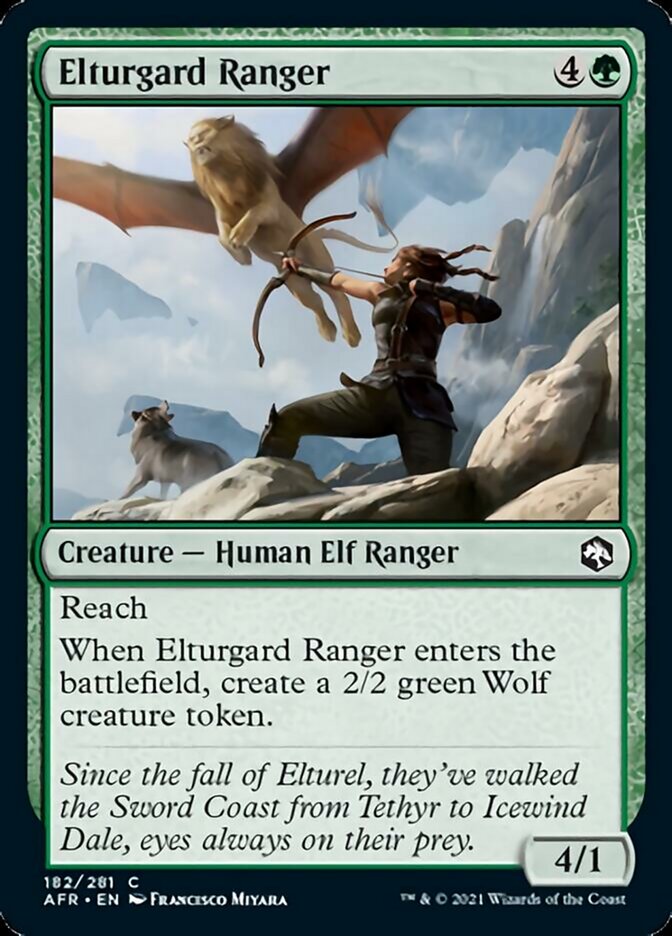
We’re back to limited filler, but this time we get the added bonus of pet doggo. Elturgard Ranger is living their best life and doing pretty well in draft, but we’ll be moving on.

Inspiring Bard
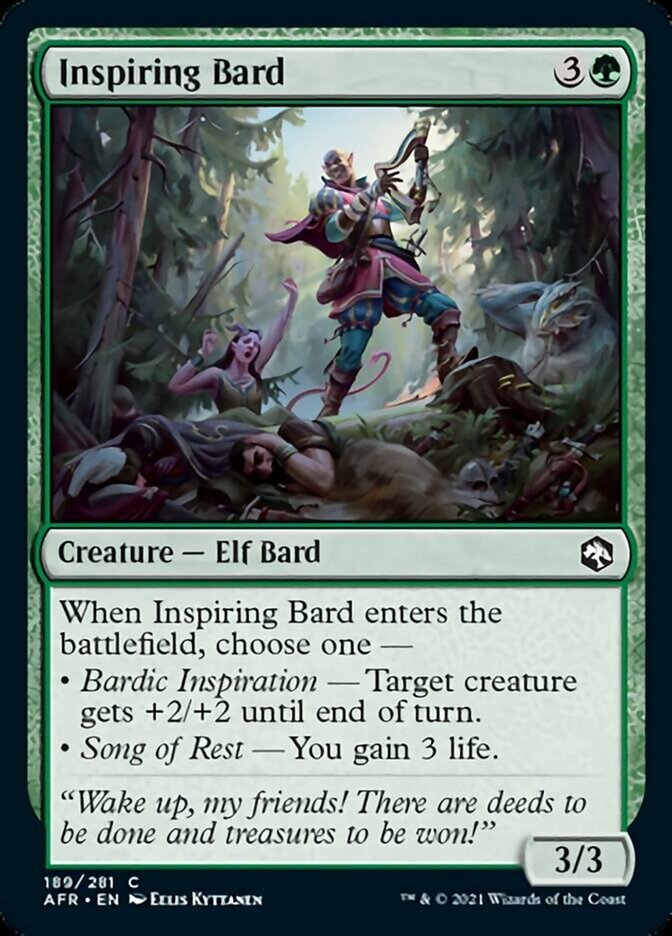
Weirdly, Inspiring Bard could have a small sideboard role going forward into Future Standard. Sometimes you’re playing against Aggro and you just need a body and some life to survive. However, we’ll still have Skemfar Shadowsage and that has a much better lifegain mode if you’re willing to splash Black. There’s also Inscription of Abundance if you want a non-creature option.

Instrument of the Bards
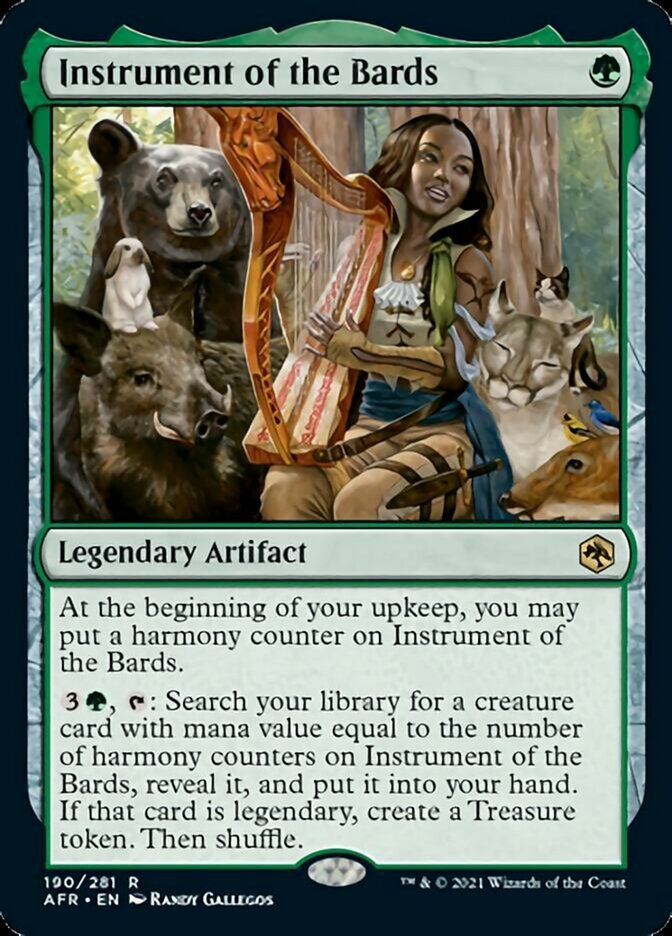
Instrument of the Bards is a painful card for me. Birthing Pod is my favourite card of all time and here we have a new card that makes you start thinking about Pod when you begin reading it. Then, you get near the end and it tells you to put the creature into your hand. Immediately, I am disappointed. Maybe the card would need some numbers tweaked to make it work as a Birthing Pod analogue, but I’d happily pay some more mana to have my beloved Pod back.
As it stands, we could use the Instrument in the late game to get a stream of our payoffs. Drawing an extra Elvish Warmaster every turn or helping find toolbox creatures could be useful, but the activation cost of four mana in addition to needing to cast the card holds this artifact back from being useful outside of maybe EDH.

Ranger Class
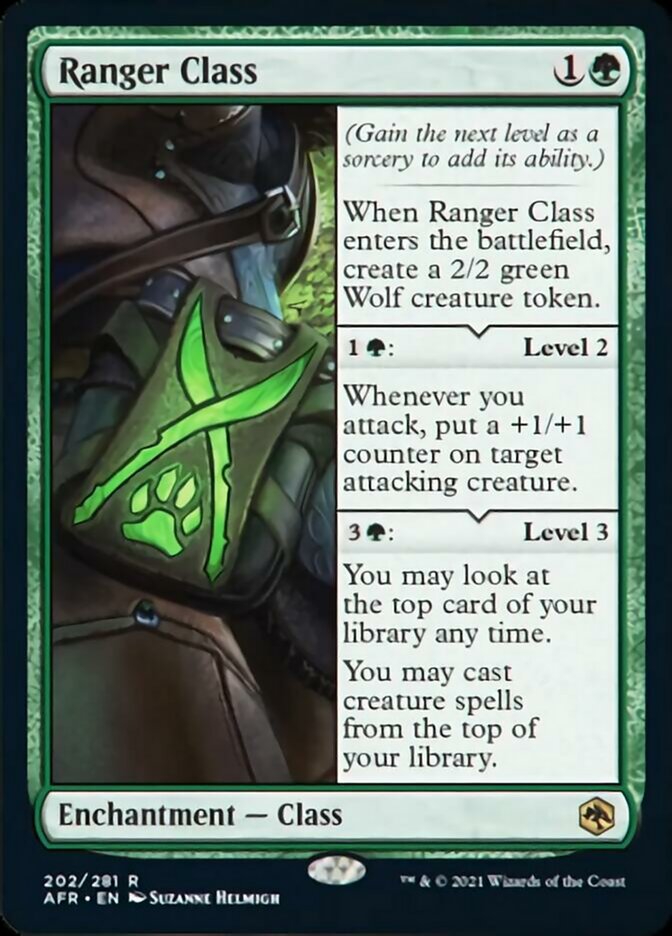
The Class cards are a new Enchantment subtype being introduced in Adventures in the Forgotten Realms. You get a base effect just by having them in play, but can unlock their other abilities by sinking more mana into them.
Ranger Class is a powerful card that will be making a splash in Standard going forward. Unfortunately for us, the ability we’re interested in is at level three. That takes a total of eight mana to get to, although we can do it for three mana with Realmwalker. Admittedly, Ranger Class is less vunerable to removal, but the Elf body on Realmwalker pairs a lot better with other synergies.
Beyond Standard, Realmwalker wins out again because you can hit it off Collected Company or fetch it up with a Chord of Calling.
Keep all of that in mind when it comes to my rating. The card is very good, but we have more suitable options for Elves.

Varis, Silverymoon Ranger
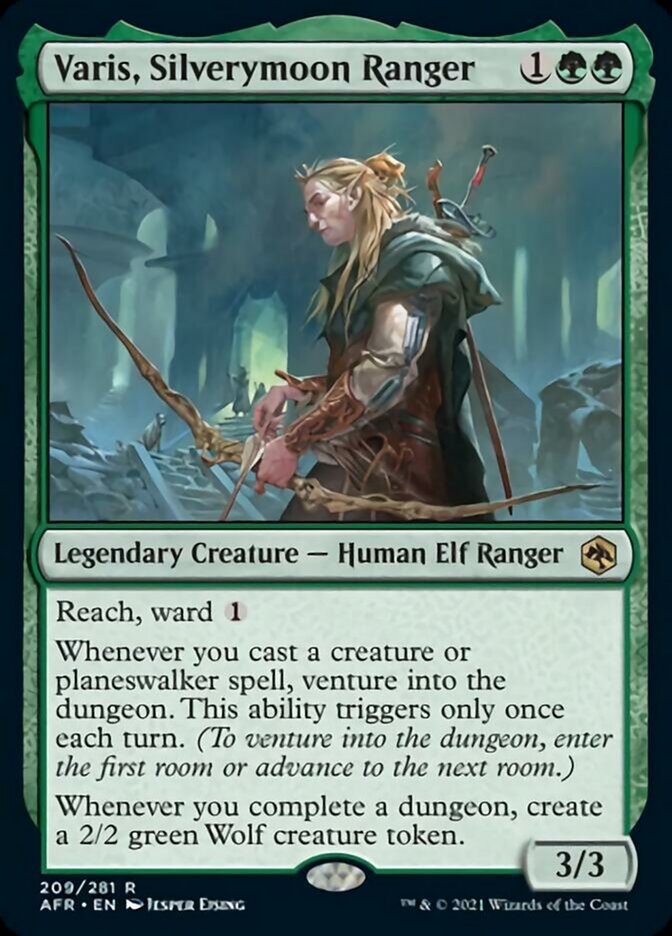
Here’s our other Venture enabler. Varis gives us access to the Dungeon basically every turn. This is only really relevant for the Dungeon-centric Elves list I’ve been playing in Future Standard, but it’s still quite fun to play.
The thing that’s holding Varis back from seeing play outside a very focussed deck is the ‘once each turn’ clause. Our Elf decks can often throw out a bunch of creatures in one turn. If Varis didn’t have this limitation, we could effectively go off and complete a Dungeon immediately, especially combined with a card like Realmwalker. Varis wouldn’t even need other Dungeon enablers to manage it. There’s even a synergy between all the scrying that two of the Dungeons do and Realmwalker to make sure the top of your deck is a stream of Elves.
Unfortunately, the Varis we got has the restriction and that will mean he’s stuck in his little Dungeon-Elves niche. I still find the card quite fun though -especially with that surprise reach hiding up there.

You Find a Cursed Idol
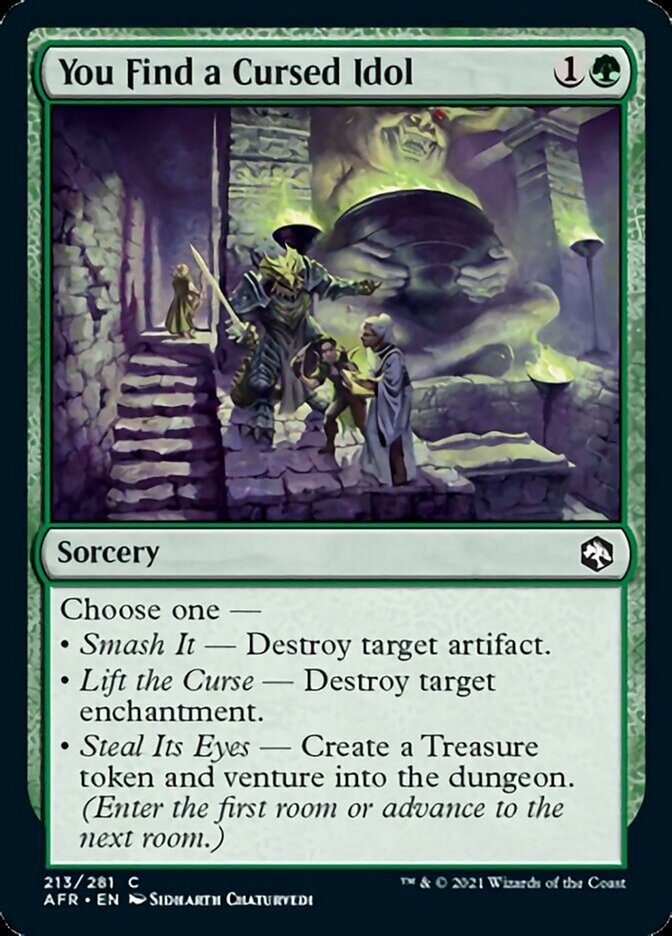
You Find a Cursed Idol has the makings of a classic sideboard card. However, if you care enough about Venturing into the Dungeon, you can include this card in your main deck and get the upside of having access to Artifact and Enchantment removal in game one. That’s only really relevant for Standard, but it does the job pretty well.

You Meet in a Tavern
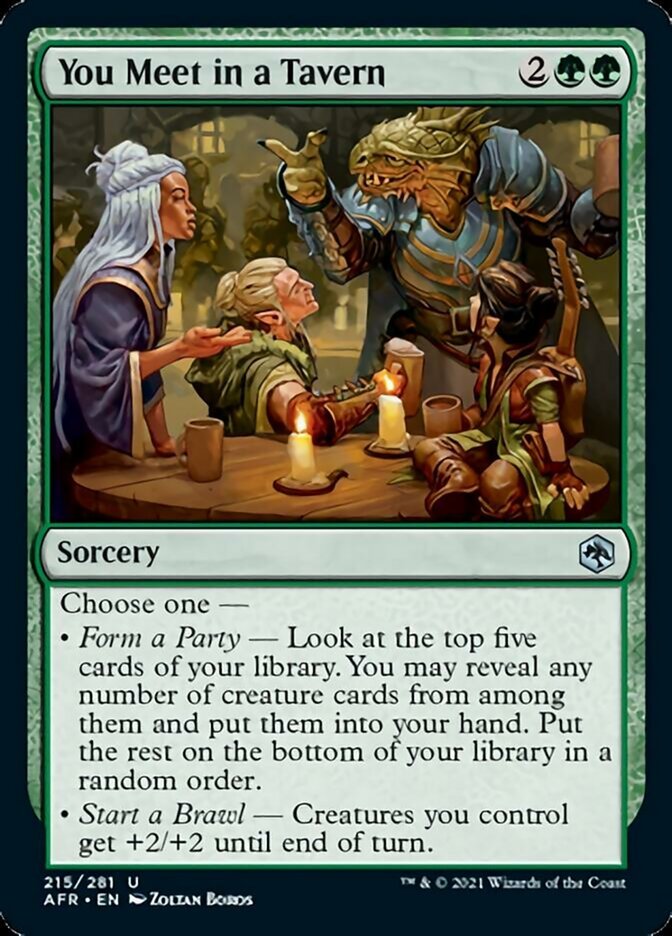
So, You Meet in a Tavern is no Lead the Stampede. An entire extra mana is a big ask for a card that doesn’t affect the board. However, Lead is rotating this year, so you work with what you’ve got. The upside is that, if you’ve already got the creatures you want, this new card can be used as a finisher instead.
The question becomes whether or not an Elf deck in Standard will want a Lead the Stampede effect after rotation. The inclusion of Circle of Dreams Druid means that the deck will hopefully be able to make enough mana to utilise a card like this. However, if the deck is streamlined enough, it could easily be left out entirely, especially if you don’t like having to say “I cast ‘You Meet in a Tavern’ and choose to Form a Party” to your opponent a bunch. These things are a bit of a mouthful when not handled by a digital client.
Beyond Standard, better options exist, including Winding Way and the aforementioned Lead the Stampede. Four mana is a real hard sell in older formats.

Drizzt Do’Urden
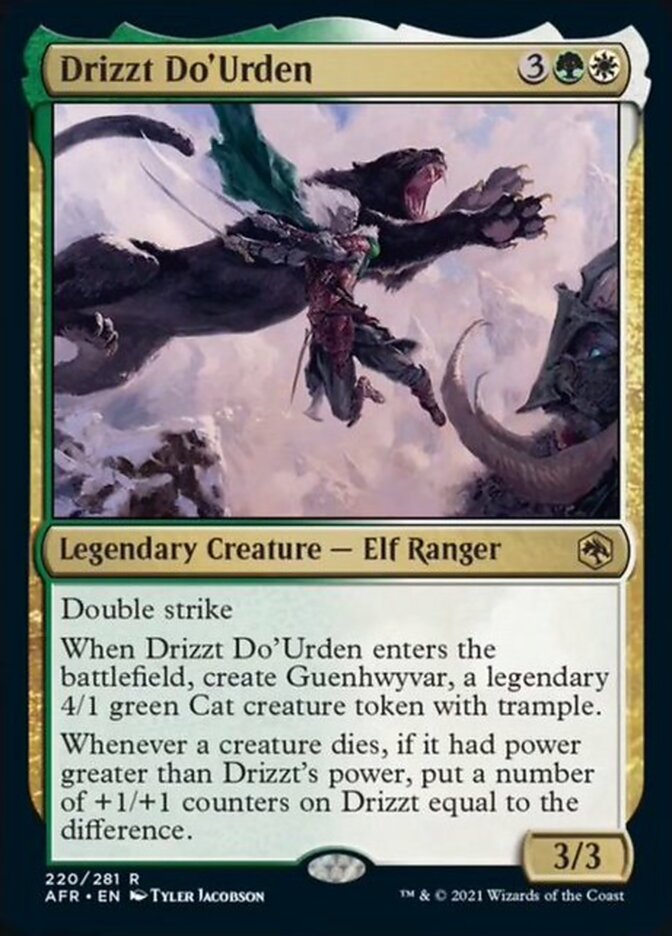
The D&D novel star, Drizzt, was never going to be a card for Elf players. Despite people looking in from outside and assuming he’s an edgy Drow Ranger loner type, Drizzt is a decently well-adjusted member of your typical adventuring party. In actual fact, one of Drizzt’s defining actions is his forsaking of other Drow. As a result, his card was never going to be about getting on with other Elves.
Drizzt Do’Urdern is a powerful card in a vacuum, but he has no real synergy with what we’re doing as Elves players. Double strike would benefit from lord effects, but nothing else that Drizzt is doing helps us. Guenhwyvar being a cat doesn’t help. I guess Elves get a bunch of different pets from this set.

Kalain, Reclusive Painter
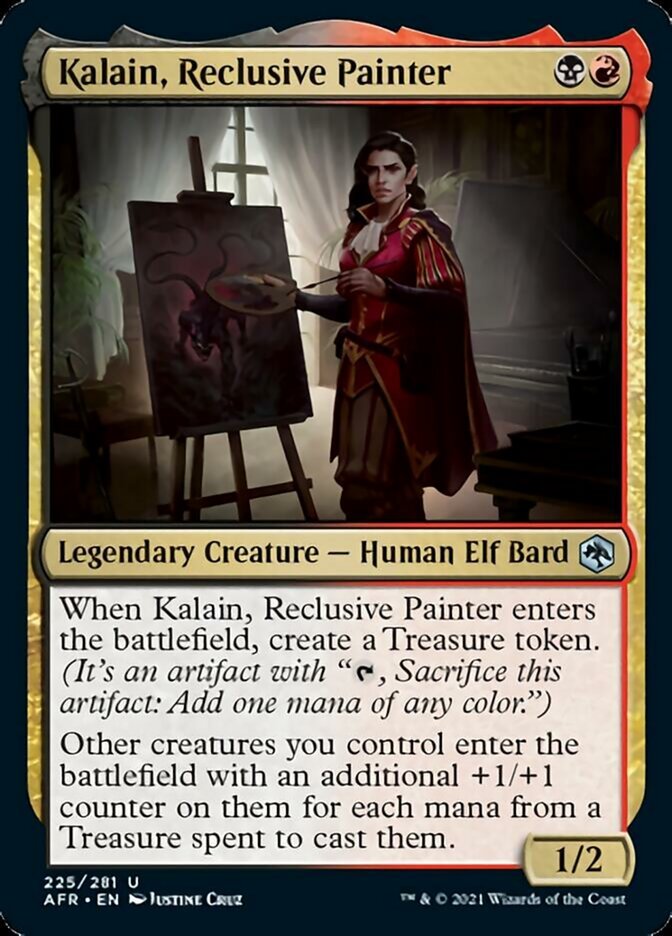
A Rakdos-coloured Elf! We’re really diversifying our colour spread with this set. Unfortunately, some of these new Elvish colour comboinations are just archetype signposts for draft. Kalain is the poster child of the best archetype in Adventures in the Forgotten Realms limited. However, we’re not really in the market for a treasure-based synergy. Even within the set, the only other cards we’ve covered that reference Treasure aren’t making the cut, so this payoff isn’t either. However, there might be some other cool Treasure deck in Future Standard that gets to play Kalain.

Krydle of Baldur’s Gate
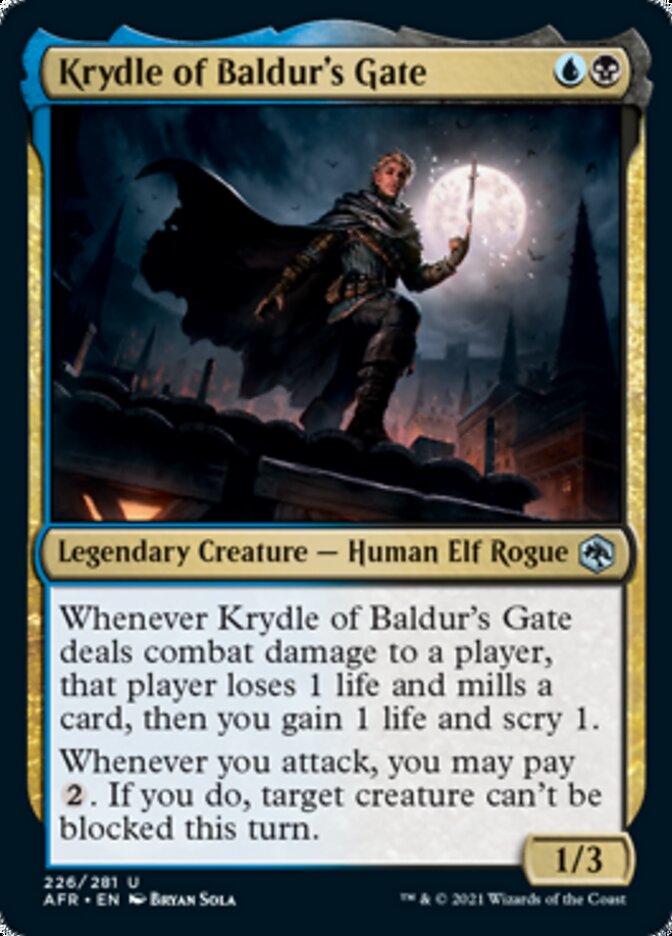
Another draft archetype signpost, Krydle is even less relevant for an Elf deck. Krydle might help out a Blue-Black Rogues deck after rotation, but we can pretty much just ignore him.
He will at least hold onto the title of ‘First Ever Dimir Elf’.

Shessra, Death’s Whisper
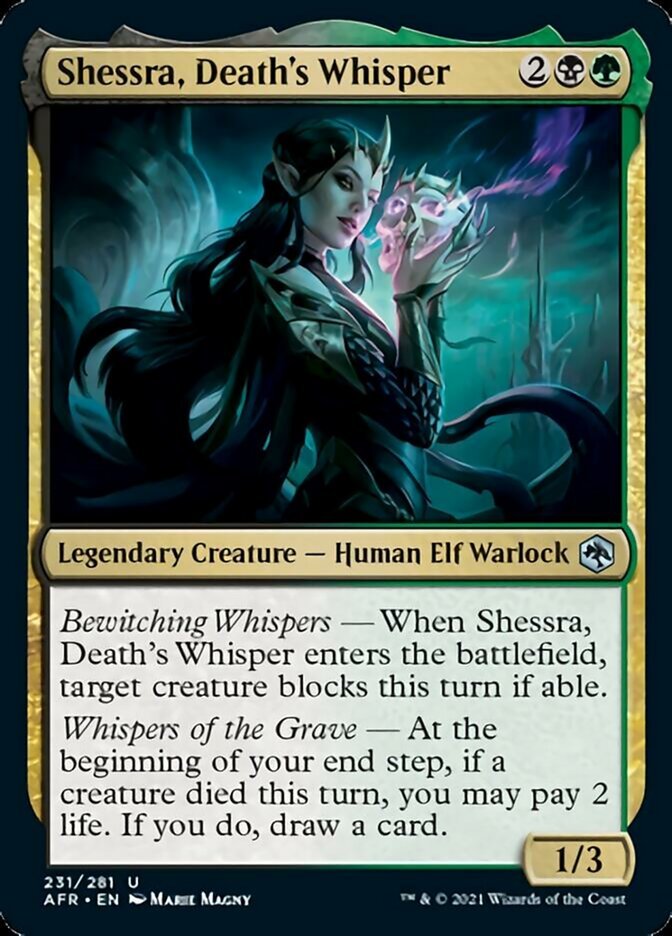
This draft archetype signpost is in the right colours! Unfortunately, a tiny body for her cost and two abilities that we can’t really make much use of mean Shessra will probably stay in limited.
Even in some kind of ‘aristocrats’ shell, Shessra only gives you a card at the end of turn if you sacrifice something, so she feels way too slow. I guess there’s a one-drop deathtoucher in Standard she could combo with.

Trelasarra, Moon Dancer
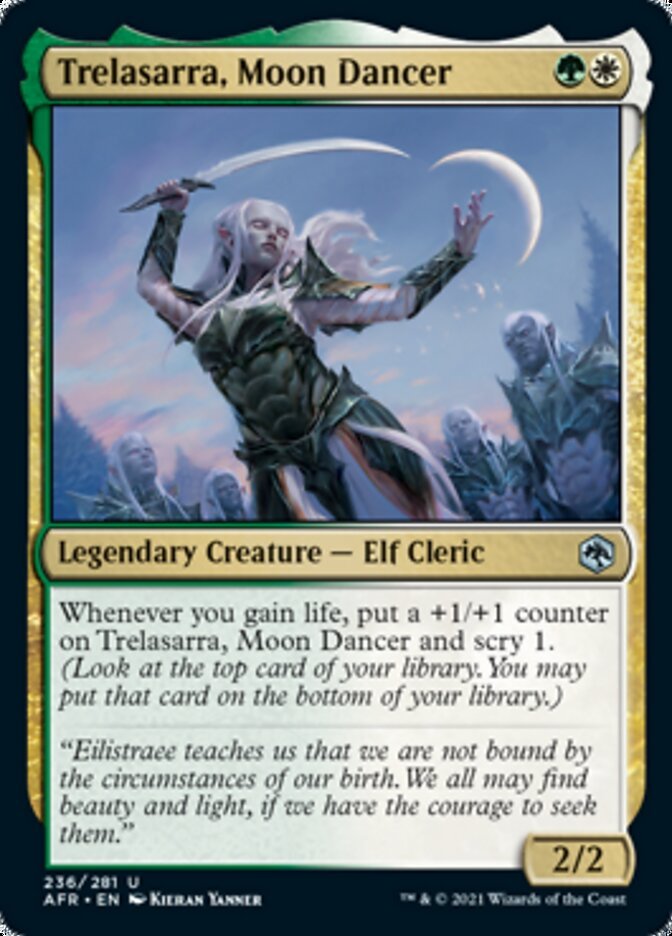
Out of all of the two-colour draft archetype signpost uncommons, Trelasarra has the best chance of making waves. It would take some kind of hybrid Elves-Soulsisters list to do it, but Essence Warden is a card that exists and Ajani’s Pridemate-style cards have proven to be powerful in the past. I guess the question is whether you’re still playing an Elf deck at that point or if your cards just happen to be Elves.

Lair of the Hydra
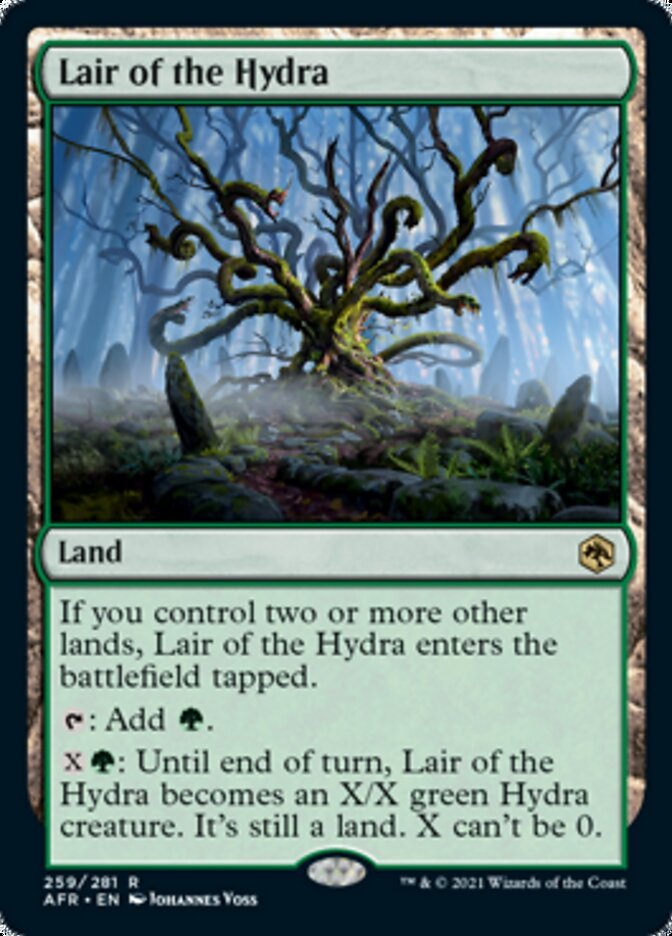
Our final card for the set is a utility land. It might not mention Elves on it anywhere, but if you’re playing a Mono-Green variant of Elves, it’s basically a free inclusion. In older formats, where there are other powerful lands to include, the Lair won’t be making it. However, in formats like Standard, Historic or Pioneer, there aren’t really any reasons not to include it. Most of the time, we want to operate with around two or three lands anyway, so the downside of the Lair coming into play tapped won’t even come up often. It helps that we’re really good at making lots of mana and this card provides a sink for any spare mana we have lying around.

Session Recap
So, Dungeons & Dragons: Adventures in the Forgotten Realms isn’t the best outing we’ve had for Elves. Despite the setting containing a plethora of our tree-hugging brethren, most of them were just limited filler. While I’ll take that over a set without Elves, it is a shame that we didn’t get many good cards to play with.
Seeing as the next two sets are set on Innistrad, a plane drastically lacking in Elvish influence, we’ve now seen most of the pieces we’re going to get to play Elves over the next year or so. I guess we can hope for some good supporting spells in Midnight Hunt and Crimson Vow, in place of actual Elves.
I am, at least, happy that we got a new card to help out Pioneer. The format had excited me when it was first announced, but I was disappointed by the lack of certain cards. This set has definitely renewed my interest in the format.
The next review will be more concise, at least. I’ll see you then.
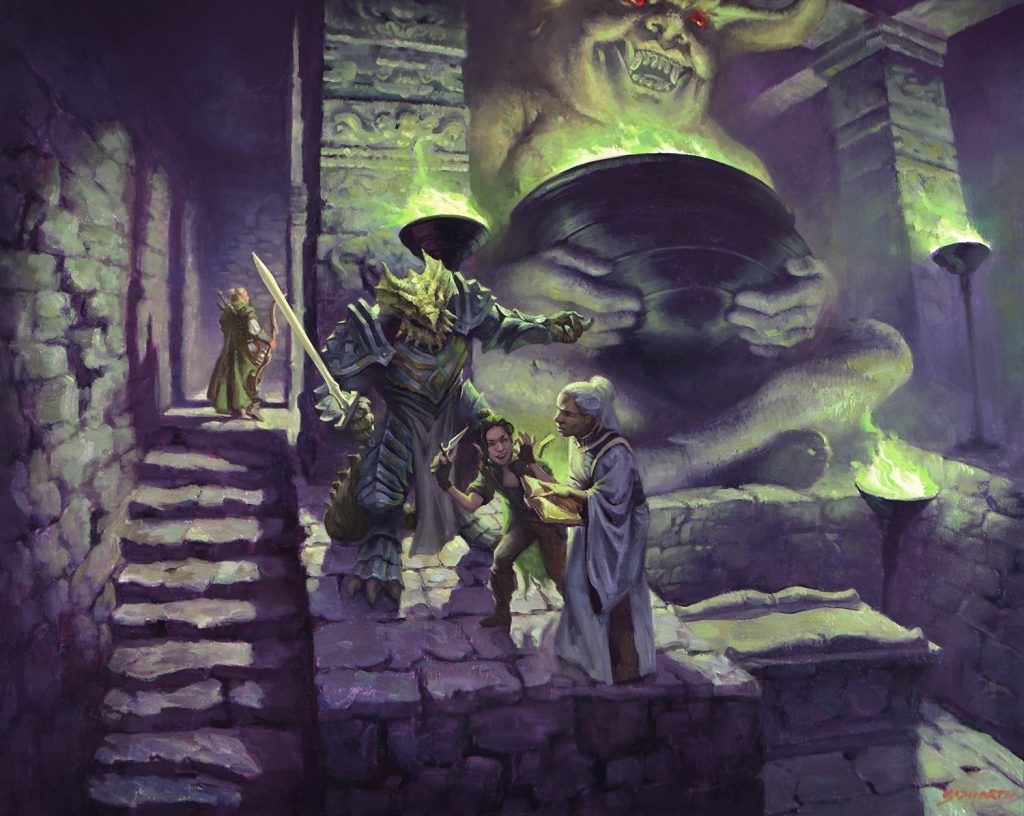
Jamie is a MtG and assorted gaming enthusiast who wants to bring his enjoyment and passion for games to everyone.
